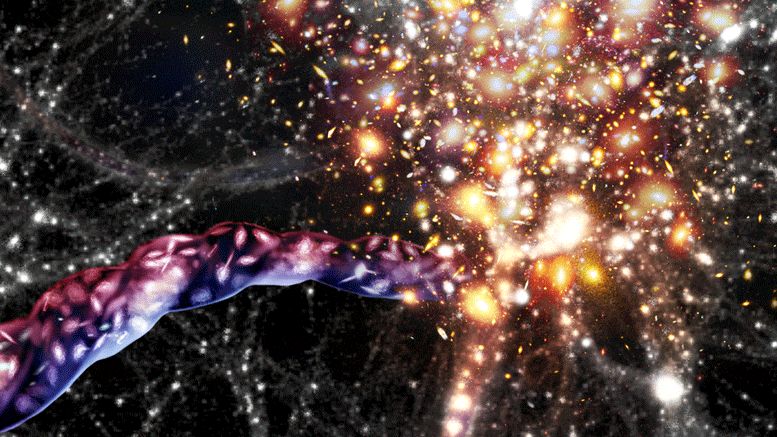
Researchers discover the largest ever, rotating structures in the universe. It can be made possible by mapping the motion of galaxies in gigantic filaments that connect the entire cosmic web. Here’s all about them.
The long tendrils of the galaxies spin and lead to rotations of mammoth proportions that have never been seen. They were first observed at the Leibniz Institute for Astrophysics Potsdam (AIP). Moreover, the research published in Nature Astronomy shows that angular momentum can arise from the structures.
What are the rotating structures and what cosmic filaments at play?
Cosmic filaments are enormous bridges of galaxies and dark matter which can connect clusters of galaxies. Additionally, the funnel galaxies towards and into large clusters that sit at their ends.
“By mapping the motion of galaxies in these huge cosmic superhighways using the Sloan Digital Sky survey – a survey of hundreds of thousands of galaxies – we found a remarkable property of these filaments: they spin,” said Peng Wang, an author of the study and an AIP astronaut. “Despite being thin cylinders – similar in dimension to pencils – hundreds of millions of light-years long, but just a few million light-years in diameter, these fantastic tendrils of matter rotate,” added Noam Libeskind, the project initiator.
Additionally, the angular momentum that is behind rotation is due to the rotation speed and context. “On these scales, the galaxies within them are themselves just specs of dust. They move on helixes or corkscrew-like orbits, circling the middle of the filament while traveling along with it. Also, the implication is that there must be an as yet unknown physical mechanism responsible for torquing these objects.” he added.
These sophisticated methods used to map can see the distribution and finance used is amazing. They can separate galaxies into two regions and another to manage the difference between two regions. The redshift OS has taken as the proxy for velocity among and between galaxies. So, it can measure its filaments based on the endpoint mass and angle of viewing. The same study also shows it was an endpoint mass filaments. All without a single character but, consistent and with rotation.
